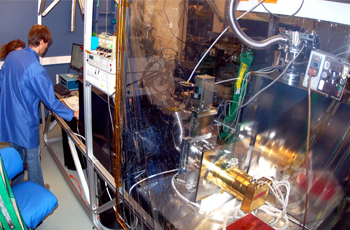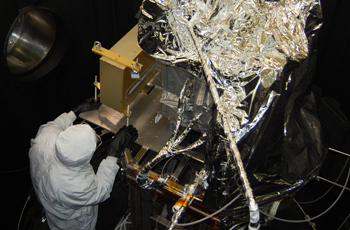| |
The Glory Mission Will Increase Our Understanding of the Earth's Energy Balance

Aerosols May Drive Significant Portion of Arctic Warming
April 8 - Though greenhouse gases are invariably at the center of discussions about global climate change, new NASA research suggests that much of the atmospheric warming observed in the Arctic since 1976 may be due to changes in tiny airborne particles called aerosols.
Emitted by natural and human sources, aerosols can directly influence climate by reflecting or absorbing the sun's radiation. The small particles also affect climate indirectly by seeding clouds and changing cloud properties, such as reflectivity.
+ View full Story
|
In the News

 Monitoring Sunlight Fluctuations Monitoring Sunlight Fluctuations
March 23 - Since the 1970s, scientists have relied upon a collection of radiometers on American and European spacecraft to keep a close eye on solar fluctuations from above the atmosphere, which intercepts much of the sun's radiation. When NASA launches the Glory satellite this fall, researchers will have a more accurate instrument for measuring TSI than they've ever had before.
 Glory Satellite One Step Closer to Orbit Glory Satellite One Step Closer to Orbit
March 12 - Glory's Aerosol Polarimetry Sensor (APS) instrument has successfully completed environmental testing and was officially turned over to NASA . The milestone comes after four months of testing at a Raytheon facility in El Segundo, Calif., during which the APS underwent a series of vibration, electromagnetic compatibility, calibration, and thermal vacuum tests.
 Aerosol Observing Technique Turns Gray Skies to Blue Aerosol Observing Technique Turns Gray Skies to Blue
March 12 - A new detection technique and a new satellite instrument developed by NASA scientists, the Aerosol Polarimetry Sensor (APS), should help ease the struggle in the study of aerosols.
+ Go to Newsroom
|
Special Features

 | Watch the energy budget animations of the Earth's total solar irradiance.
|
 |
Learn about Glory and Earth Science while having fun!
|
Related Links

|
|
